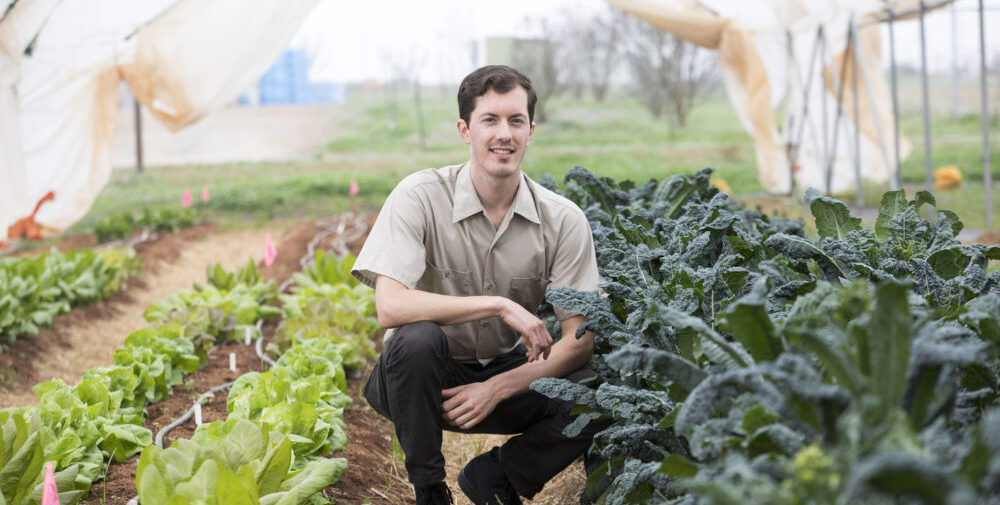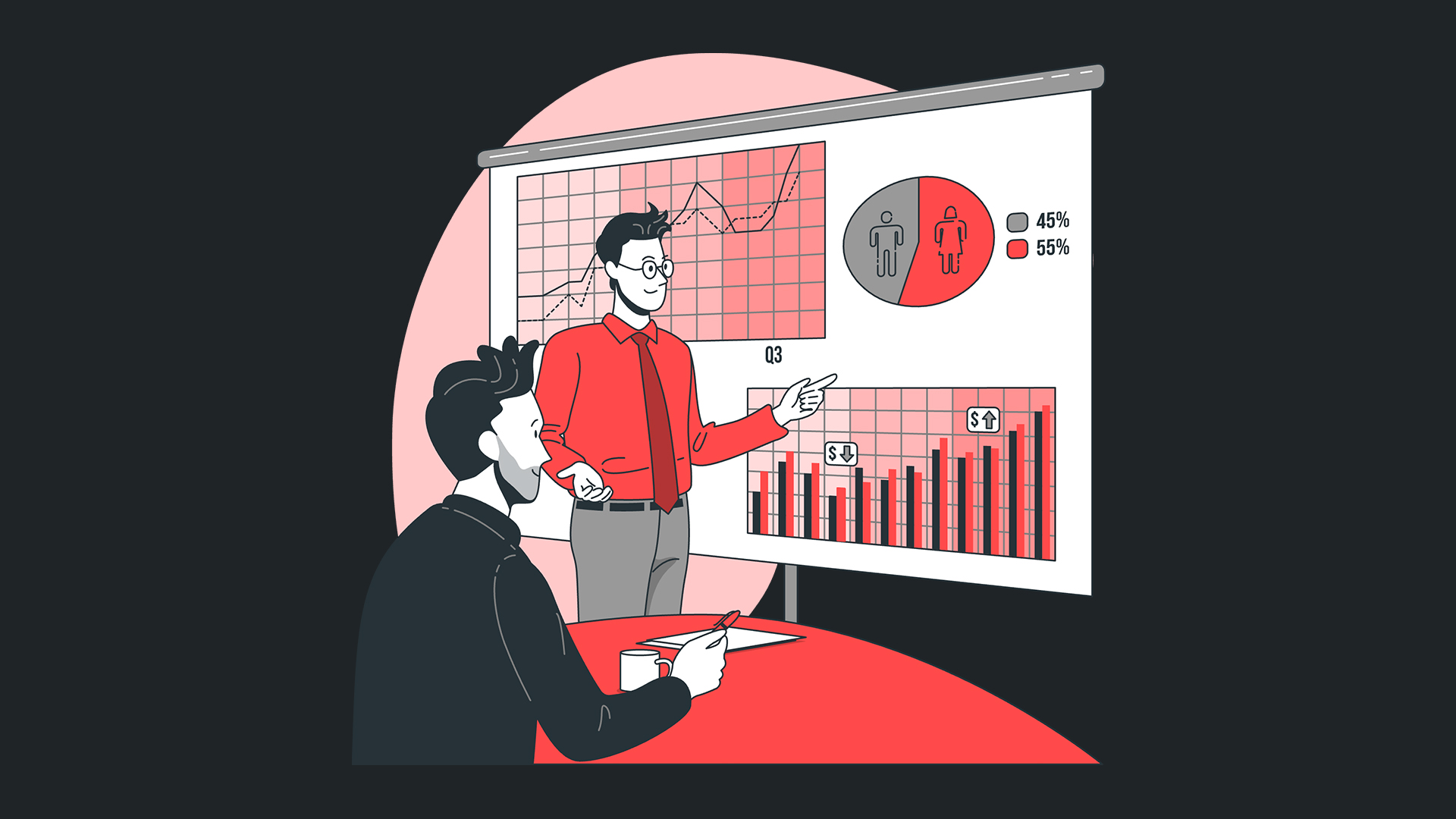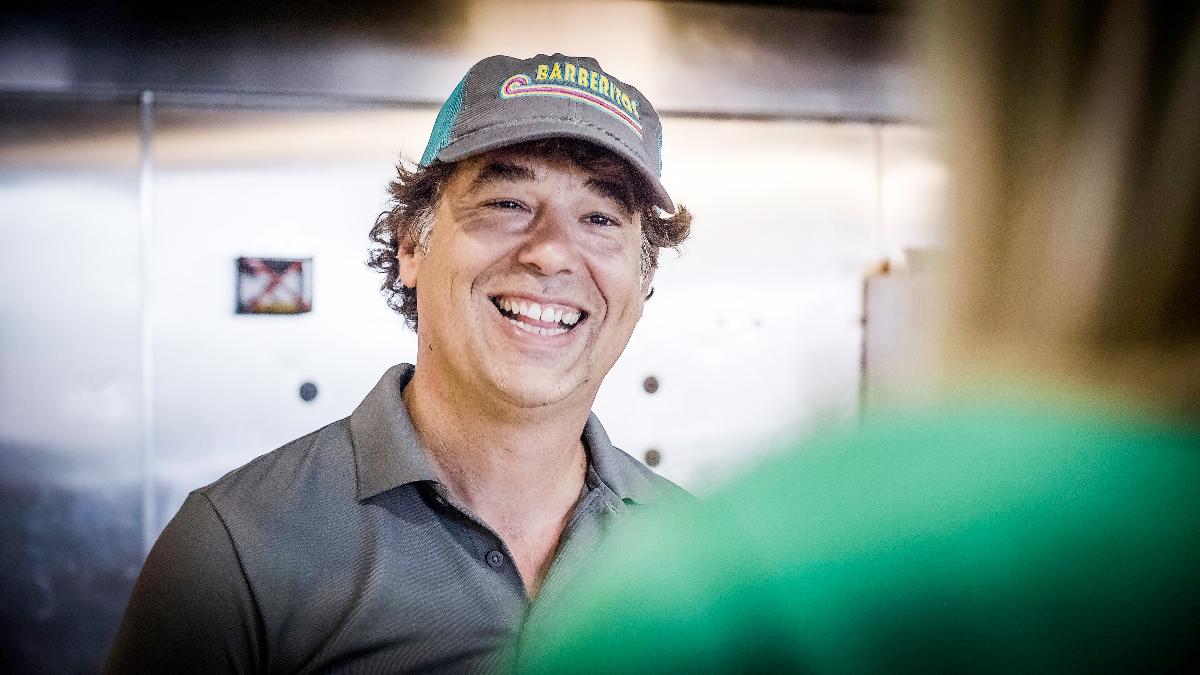
Talking to the Ithaca native is a good way to demythologize the glossy brochures business schools use to advertise their entrepreneurship programs. Lafian’s path to taking two products to market and patenting a third has been improbable, marked by serendipity, diligence, and attentiveness to stakeholders.
Lafian’s first passion was music. An avid drummer, he played in a number of bands ranging from a Binghamton act called Summer People to Porches. He balanced his schooling with touring in an ever-changing constellation of bands, extending an associate’s degree in horticulture to seven years.
At some point, Lafian hit a wall. Life as a musician exacted a heavy toll to continue following an uncertain trajectory. The pay was abysmal, the couch-surfing was getting old and he was drifting through life from gig to gig. In short, he wanted something different.
His community-college studies had refined his appreciation for nature and aesthetics, both of which loosely informed his decision to venture into science. A friend told him about Research Experience Units (REU) funded by the National Science Foundation (NSF). These programs worked like internships, providing participants with specialized on-the-job training and industry experience. He applied, and was accepted into a program administered by the Monterrey Bay Aquarium Research Institute (MBARI).
At the time, Lafian didn’t realize how this work would shape the contours of his career. He was drawn by the lure of living on the West Coast, and wanted to try his hand at something new. In fact, he ended up on the vanguard of ocean engineering. MBARI is a hub of innovation, widely considered a premier research center for oceanography. The technology Lafian was using every day represented the cutting edge of the field.
One of the tools Lafian learned about at MBARI was LoRa, a long-range wireless solution that increased range and communication with remote devices. Where traditional radio technologies worked only within a limited area, LoRa enabled bi-directional transmissions over long distances. It’s one of the favored technologies used for applications in the Internet of Things (IoT), a network to transfer data drawn from devices operating in the real world.
When Lafian’s tenure at MBARI ended, his network there decided to help. One of his mentors called in a favor to a colleague at the University of Georgia. On the spot, Lafian was hired as a lab assistant at the university’s engineering school.
Comfortably ensconced in his new position, Lafian had time to contemplate his next move. He didn’t see himself following a marine research track, and returning to the music industry didn’t feel promising. He decided to enroll as a full-time student in the University’s horticulture program.
Then one day, a professor casually mentioned a perennial problem in sustainable agriculture. As water resources become scarcer, managing irrigation more efficiently has become imperative. However, the technology hadn’t caught up to the need. In a word, soil moisture sensors suck. Most of the products on the market fit into two categories. Either they’re effective but prohibitively expensive, or affordable but useless. “If someone could develop an apparatus that works well and comes in at a lower price point, they’d be able to retire early and live in a beach house,” the professor observed.
Something inside Lafian clicked. What was limiting the range and operabilities of soil moisture sensors was its reliance on traditional modes of transmission. This made for clunky equipment and poor performance. What if he used LoRa technology to improve the operability of these sensors?
“Inspiration exists, but it has to find you working,” wrote Pablo Picasso. Lafian’s epiphany was real, but it came from the reservoir of experience. Few would have seen his background in oceanography as an advantage in enhancing agricultural water management. Here again, Lafian proved the conventional wisdom wrong. Coming at the problem from outside the silo of agricultural science, he was able to avoid the quagmire of stale solutions. He offered a fresh perspective that promises to transform soil sensing technology.
Having a great idea is one thing; bringing it to market is quite another. Lafian was an entrepreneurship novice who had never pitched a single product. He didn’t know where to start.
Searching for help developing and selling his product, the novice entrepreneur landed on two invaluable resources. Within the university, Terry College of Business sponsored juried pitch competitions with generous cash prizes for winning startups. These provided a venue to practice the art of persuading investors and an opportunity to secure funding to seed his new venture.
He’d need more than practice and investment; he needed mentoring to navigate the entrepreneurial landscape. Jim Flannery, formerly of FourAthens (now AthensMade) fit the bill perfectly. His bio characterizes him as “an experienced startup entrepreneur, trained biomedical engineer, strong public speaker, self-taught web developer, self-satisfying comedian, eccentric physics teacher, and mediocre painter,” driven by a desire to liberate people trapped in old patterns of thinking. In many ways, Jim was a lot like Jesse.
There was a sharp learning curve, but Jesse caught on quickly. After working closely with Jim in an intensive eight-week program called Idea Accelerator, he entered his first pitch competition. He placed third. He won the next contest, netting $10,000. Then he repeated his triumph a few more times. He earned nearly $50,000 in winnings from these events, which he used to live on while ramping up development.
Buoyed by enthusiasm from his audiences, Lafian took his sensor on the road. Customers raved about the idea. A trade magazine featured him prominently in an article about new tech breakthroughs. In time, he identified three companies in the space who might acquire the product.
In startup world, it’s practically inevitable for founders to pivot from their first idea to a better one. Lafian ultimately pivoted to developing a product called Spoke, a long-range irrigation-control system for horticultural growers.
“It’s the iPhone of irrigation systems, as far as I’m concerned,” explains Lafian, who likes to pepper his conversations with analogies. What he means is this: these days, we expect most tech products to work like smartphone apps. Tap an icon, download, and start using. Until recently, however, irrigation systems didn’t work like that. They required expert skill, knowledge, and training to install. Lafian’s platform had the potential to revolutionize this space, cutting through the cumbersome infrastructure of older systems and making it as easy as downloading the FitBit app.
During Spoke product development, Lafian conceived a second product—quite unintendedly. “Aqua-Pin was an accidental baby born from Spoke,” he admits. When showing off the features of the Spoke platform, customers inevitably fixated on one of its features: the ability to precisely identify the location of devices in the field. A few told him they’d pay just to have that capability. Another client mentioned that his “pinning” feature would be invaluable for solving a different set of problems involving valves.
To see why the locator excited customers, imagine an irrigation contractor finishing up work for the day. It’s 5:30pm, and he’s getting ready to go home, when he gets a call from a condo development complaining about water pooling in a corner of its property. He groans. It’s an irrigation leak. He’ll have to shut off water flow at the source, after digging around to try to find the valve box. It’s definitely not what he wants to do for his last job. He might save it for tomorrow morning. Meanwhile, the water keeps flowing.
Lafian’s solution, which he’s marketing as a free-standing app called Aqua-Pin, will fix this problem in a fraction of the time. Our aforementioned irrigation contractor could identify valve locations with the tap of a finger, dig them up for inspection, make repairs, and get home. In fact, upon install he can even make notes about exactly which irrigation equipment is being used on the property. Aqua-Pin saves time, energy, money, and water.
For an entrepreneur on the brink of disrupting the industry, Lafian remains self-effacing about his accomplishments. “My life is so filled with fortuitous events,” he reflects. Landing in Athens has become an important component of that good fortune. The university’s resources, the community’s support, and freedom from the distractions of being in a bigger city have all enabled the launch of Spoke and Aqua-Pin. “I couldn’t have done this anywhere else,” Lafian confesses.
The meandering route Lafian has traveled from drumming and oceanography to horticulture and innovation deviated at multiple points from the traditional paths prescribed by entrepreneurship programs. Being in the right places at the right times helped, as Lafian readily admits. But creativity, hard work, and adaptability contributed as much to his fortune as serendipity.
If a deal materializes for Spoke or Aqua-Pin goes viral, Lafian claims he won’t change his life much. He’d like to travel more, but he’ll stay the same frugal guy who scans the menu for the cheapest entree when he eats out.




